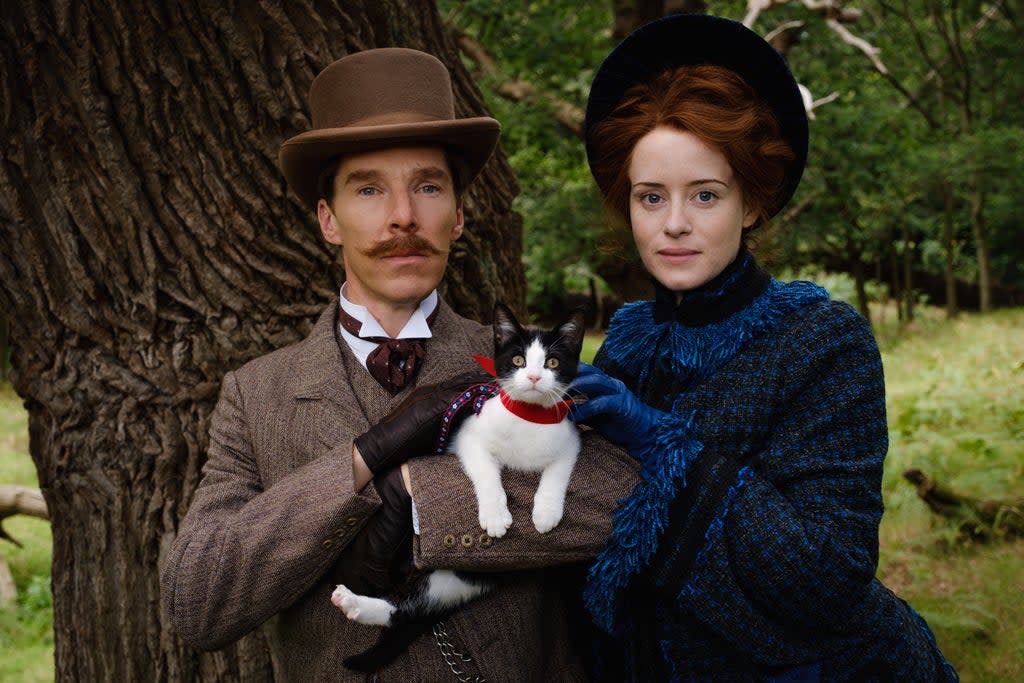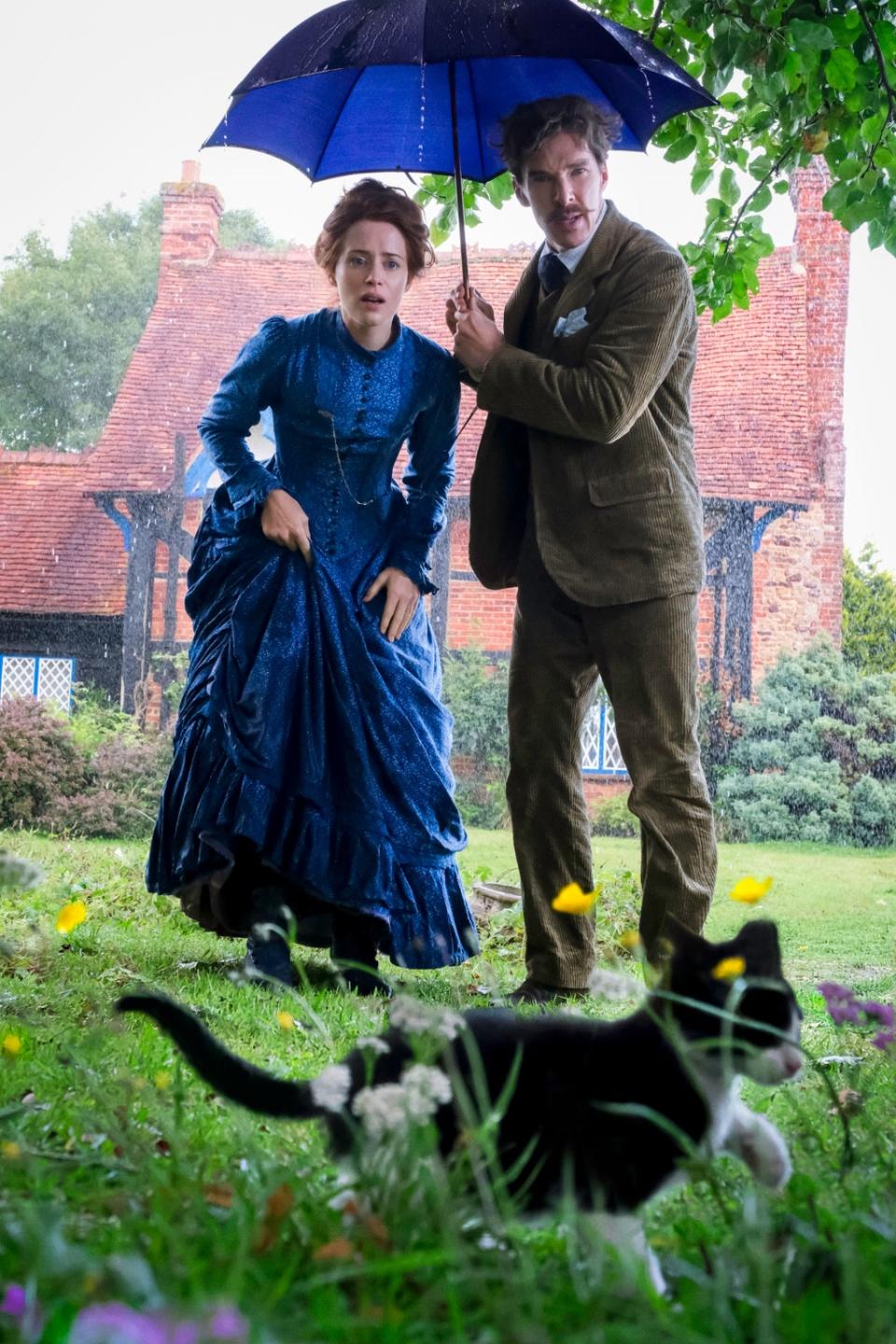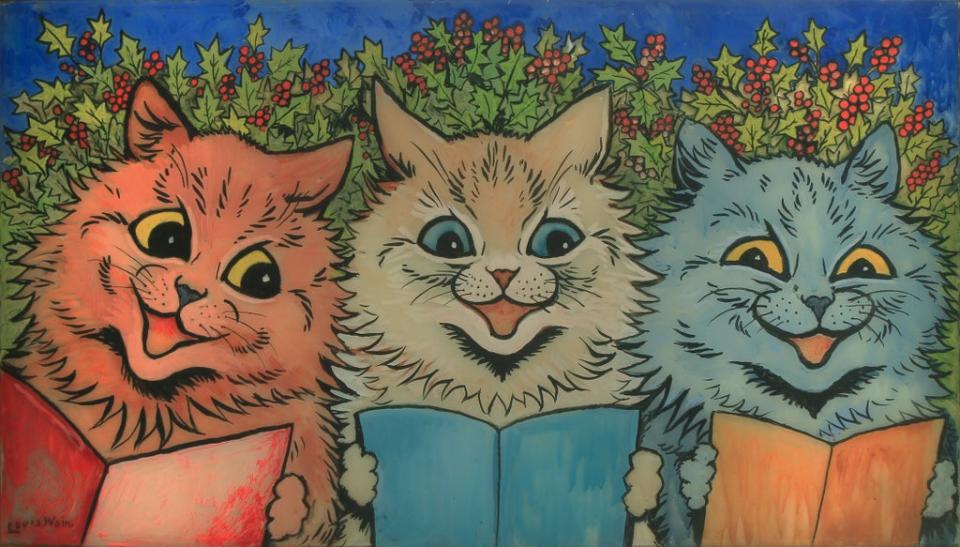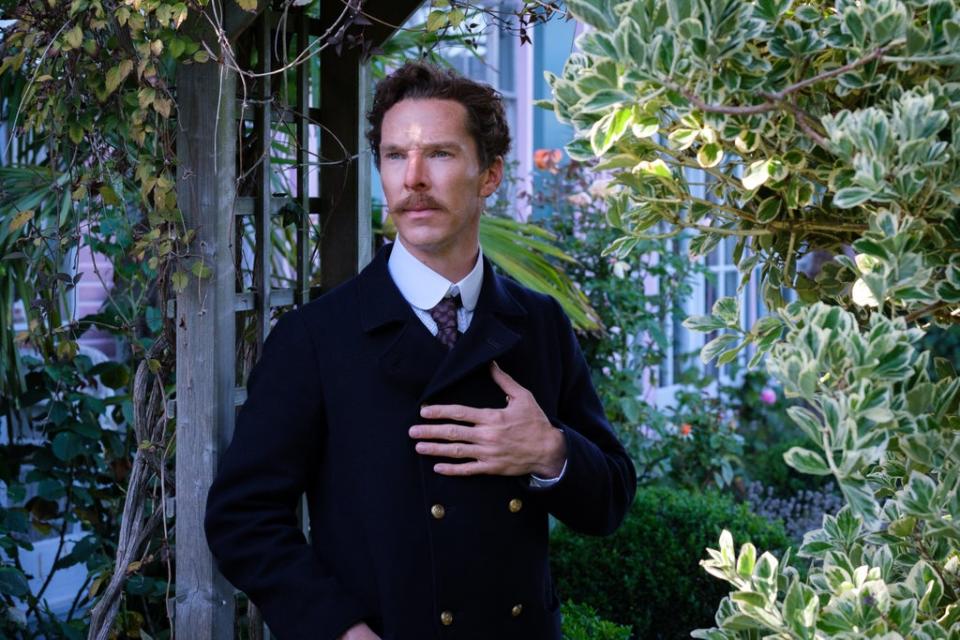The Electrical Life of Louis Wain starring Benedict Cumberbatch: the true story of the cat-loving artist

Louis Wain might be the reason you have a cat. A celebrity in his day, the Victorian artist’s mega-popular paintings helped rebrand our feline friends from being seen as vermin, to the cuddly creatures many of us now own as pets. If you don’t know his name, you’ll probably immediately recognise his pictures. But now, his name – and his colourful, dramatic life – is finally returning to public consciousness.
A new film, The Electrical Life of Louis Wain, opens in cinemas on New Year’s Day with Benedict Cumberbatch playing Wain himself. At the same time, Wain’s works can be seen in an exhibition at the Bethlem Museum of the Mind, on the same site of the Bethlem Royal Hospital where Wain spent some of his final years. Born in 1860, he came to prominence for his depictions of cats – some cutesy, some psychedelic – but his life also included a heartbreaking love story and a series of mental health struggles.
“We found that the less we made up, the more remarkable it felt,” says Will Sharpe, film’s director. “The more I read about his life, the more I felt cumulatively inspired by him as a human being, and I really wanted this to be a film first and foremost about Louis Wain the human being, almost more than as a historical figure or even as an artist.”
Before filming began, the cast and crew went to see Wain’s work at the Bethlem Museum of the Mind, much of which was directly gifted to the hospital after his death. “The first thing that struck me was how, on the surface of it, a lot of his pictures are these innocent, playful tableaux of cats playing badminton, or gambling in a bar, and so on,” says Sharpe. “But occasionally, especially looking at them in the flesh, you notice these little details, or some inscription that betrayed this underlying vulnerability of fragility.” One such example is a sweet, smiling cat, hovering above the words ‘I am happy because everyone loves me’ - more doubtful and poignant when you learn about the ups and downs of Wain’s life.

Wain, thinks Sharpe, was “the guy who understood what a cat meme is, if you like.” He got their strange charisma, that they can be surly and independent but also vulnerable, goofy and affectionate. “He was not put off by the fact that they were not really appreciated as beautiful or a creature to have affection for then, and that was another thing I really liked about him – he seemed like someone who was really unembarrassedly himself, even when it was quite inconvenient to be himself.”
It’s a point that Cumberbatch echoes in a new introduction for a book about Louis Wain: “To be Louis felt like tuning into a perpetual voice, sometimes quiet and shy, sometimes channelled into a singular focus, and at other times openly confrontational, a voice saying to the world: ‘But don’t you see?!’” He was also famously fast, which helped him get a job at the London Illustrated News, and could draw ambidextrously – an eye-popping technique that Cumberbatch learned to replicate for the film.
But why cats? It may have a lot to do with the love of his life, and the grief that followed after he lost her. Wain married his sisters’s governess Emily Richardson (played by Claire Foy) – very much against the rest of his family’s wishes – only for her to die from breast cancer just three years later. But before her tragic death, the couple came across a stray kitten who they named Peter and kept as a pet, although doing so was uncommon at the time. Wain would draw numerous pictures of Peter to cheer Emily up throughout her illness, and later credited the cat with “the foundation of my career, the developments of my initial efforts, and the establishing of my work.”

But there’s a persistent myth that Wain’s more experimental cat pictures – so-called “kaleidoscopic cats” or “schizophrenic cats” by some - can be linked to his declining mental health, says Colin Gale, director of the Bethlem Museum of the Mind. “This is on the theory that it was schizophrenia that Louis Wain suffered from, which no one can be sure about, and there’s a lot of evidence pointing the other way. The myth is given a push by the fact that in the late 1930s, some Louis Wain pictures were found in an antique shop in Camden by a psychiatrist at Maudesley hospital. He bought them as a set and saw in them a progression, starting with relatively realistic, though cartoonish, depictions of cats, the kind for which he was well known, moving through to the more abstract, kaleidoscopic representations where the face of the cat disintegrates into patterns and colours. And the psychiatrist theorised that this progression tracked Wain’s own mental decline.”
The problem is that none of the pictures are dated, so there is no evidence that they were made in this order or were even part of series. Plus, experts say there’s nothing in the more abstract works to suggest mental disintegration or a deterioration of artistic skill.
What we do know is that Wain’s parents both worked in textiles, so he would have been surrounded by patterns, colours and fabrics throughout his upbringing. In the making of the film, Sharpe worked with designer Susie Davies and costume designer Michael O’Connor to try and manifest Wain’s world with visual language, the surroundings of which could have influenced his more experimental works. “It feels like there’s almost a distillation of that formative childhood, and the formative years with Emily, and they’ve combined,” says Sharpe. “We certainly saw those pictures almost like: if you go to the bottom of his psyche, what do you find? The purest version of his work.”

Over the years, others have speculated that Wain could have had Aspergers syndrome, bipolar disorder, or been affected by toxoplasmosis from spending so much time around cats, but it was important to Sharpe that the film didn’t attempt to “retro-diagnose” Wain. “We wanted to be very sensitive about this as a kind of study of behaviours, and the actions and events of his life, but not to try and diagnose him.”
The film, then, is careful not to place modern ideas on to a historical figure, although there’s no doubt Wain would have benefited from the increased understanding we have of mental health today. It’s also true that he had a poor business sense even though as the only boy he was expected to be the family breadwinner after his father’s death. This lack of financial know-how meant that he gave away many of his pictures and failed to copyright them. It left me wondering how different his legacy might have been – a whole Beatrix Potter-like industry out of his work, perhaps – if he’d had a canny accountant.

“A hundred years ago, Louis Wain was a national treasure – his name was well known, and people would have bought his Christmas annuals and exchanged them. The film, I think, will be for many people a rediscovery of a story that probably their grandmother knew,” says Gale. The exhibition contains around 35 of his works, but he was prolific – there are thousands of his works out there, and art dealers who specialise in his works. “There are lots of forgeries as well, which is another sign of success and prominence of an artist.”
In 1924, Wain’s increasingly erratic behaviour saw him transferred to a pauper’s asylum. The film’s ending is remarkable – not least because it’s true. “It’s one of the uplifting things that happened – that he was genuinely found in a pauper’s asylum by someone who recognised his work, and that really did lead to the public being surprised and appalled, and saddened by where he was at. And what followed was there was an opportunity for people to repay the love they felt they got from him,” says Sharpe. A public appeal was launched, with a personal intervention from Prime Minister Stanley Baldwin, and vocal support from HG Wells (played in the film by Nick Cave, an avid Louis Wain collector himself). He was transferred to more comfortable facilities at Bethlem, and later Napsbury Hospital – where they had cats, of course. He died there in 1939.

Wain’s challenges, triumphs and struggles were very real – but it’s more than our shared, modern love of cats that makes his story relatable. “One thing I’d say about the challenges he faced in his life, whether they were personal challenges or just living through difficult periods in history – which I guess you can argue we can all relate to at the moment – was that overall, my experience of reading about his life was that I was inspired, personally, and uplifted,” says Sharpe. “Something we really wanted to capture in this film was his resilience and his courage. I felt like he led quite a heroic life in many ways. It’s demons of a different kind that he’s contending with – but I did feel like you could call him a hero of a kind.”
The Electrical Life of Louis Wain is in cinemas on January 1, 2022; Animal Therapy: The Cats of Louis Wain is at the Bethlem Museum of the Mind until April 14 and can also be viewed online at museumofthemind.org.uk/whats-on/exhibitions/animal-therapy-the-cats-of-louis-wain

 Yahoo Movies
Yahoo Movies 
